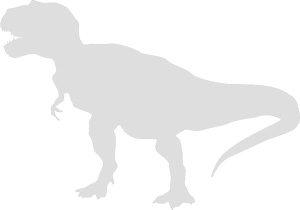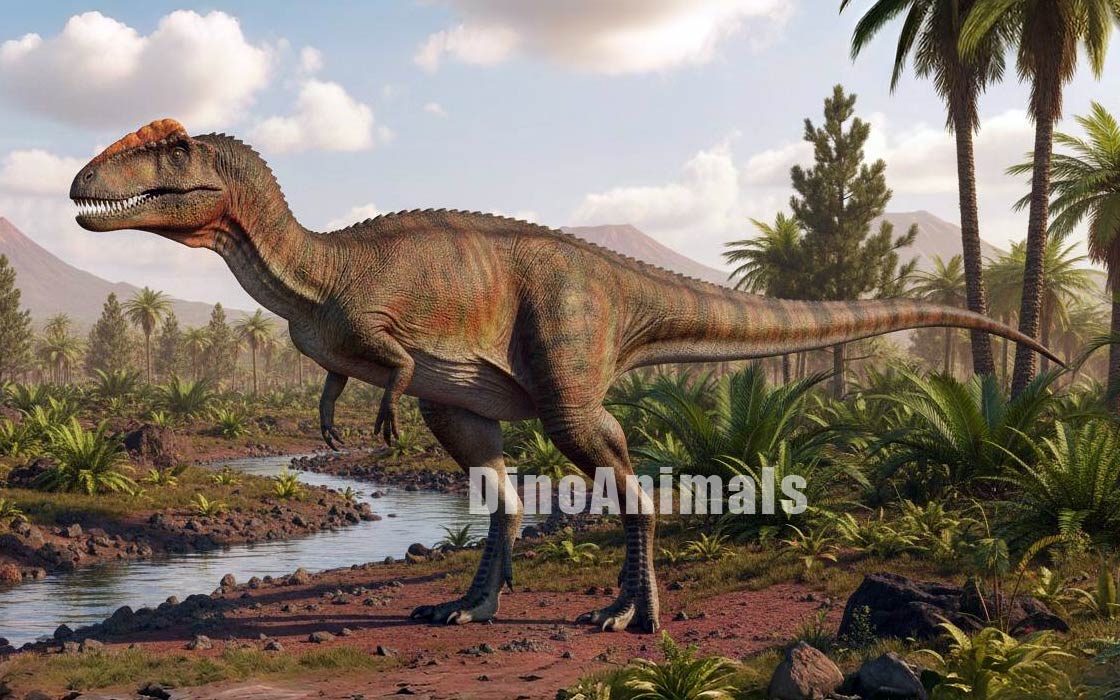Every month, 100,000 readers use the Dinosaur Database, but we receive no support from you. Developing and updating the database requires a lot of work. If you want it to remain open and be updated, please support us via the "Buy us a coffee" button available on every page or via the Support page.
Dinosaur: Newtonsaurus cambrensis

| Length*: | 6.4 m | 21.0 ft |
| Weight*: | 400 kg | 882 lb |
*The largest known specimen
Period
Epoch: Late Triassic
Stage: Rhaetian
Years: 208.5–201.4 Ma
Details
Status: valid
Author: Evans et al.
Year: 2025
Distribution
Area: Europe
Country: United Kingdom
Region: Wales
Formation: Lilstock
Classification
Description
Newtonsaurus cambrensis
Newtonsaurus cambrensis was a basal neotheropod dinosaur that lived in what is now South Wales, United Kingdom, during the Late Triassic period, approximately 205–201 million years ago (Rhaetian stage). It was discovered in the Cotham Member of the Lilstock Formation, part of the Penarth Group, a sedimentary sequence known for its marginal marine and coastal deposits.
The name Newtonsaurus honors Edwin T. Newton, the paleontologist who first described the specimen, while cambrensis refers to Cambria, the Latin name for Wales.
As a member of the Theropoda, Newtonsaurus represents one of the earliest known large predatory dinosaurs in Europe, bridging the gap between smaller coelophysoids and later Jurassic forms.
Etymology
The genus name “Newtonsaurus” is derived from Edwin T. Newton, the British paleontologist who first described the fossil in 1899, combined with the Ancient Greek “sauros,” meaning “lizard.” The species name “cambrensis” refers to Cambria, the medieval Latin name for Wales, where the specimen was found.
Physical Characteristics
Newtonsaurus cambrensis was a large theropod dinosaur, estimated to reach 5–7 m (16–23 ft) in length. This size is substantial for a Late Triassic theropod, making it one of the largest known from that period, though exact measurements are limited by the fragmentary remains.
Key anatomical features include:
- A large left dentary (lower jaw) natural mould, approximately 56 cm (22 in) long, with a robust, straight body and a prominent external mandibular fenestra positioned posteriorly.
- Deep, laterally compressed alveoli for strongly recurved, serrated teeth with a D-shaped cross-section in lateral view, resembling those of Dilophosaurus.
- Anterior dentary with a sharp, recurved symphyseal margin and a shallow Meckelian groove.
- Posterior dentary with a broad, rugose surface for muscle attachment, indicating a powerful bite.
- General resemblances to basal neotheropods, such as elongated dentary proportions and tooth morphology shared with European coelophysoids like Liliensternus and Dracoraptor, but larger in scale.
These features suggest a robust skull adapted for predation, with the dentary indicating a more derived position among basal theropods, possibly as an averostran or early tetanuran.
Diet and Feeding Habits
As a carnivorous theropod, Newtonsaurus cambrensis preyed on a variety of vertebrates in its coastal ecosystem. Its diet likely included:
- Smaller reptiles, fish, and amphibians abundant in marginal marine deposits.
- Contemporary dinosaurs and archosaurs, given its size as a potential apex predator.
- Invertebrates or carcasses, supplemented by scavenging.
Like other basal theropods, Newtonsaurus probably used its recurved teeth to grasp and tear flesh, relying on powerful jaw muscles for subduing prey.
Habitat and Distribution
Newtonsaurus cambrensis lived in what is now South Wales, United Kingdom, specifically in the Cotham Member of the Lilstock Formation (Penarth Group), a geologic unit preserving Rhaetian marginal marine sediments.
Its environment was characterized by:
- Shallow shelf seas and coastal lagoons, with fluctuating salinity and tidal influences.
- Littoral sandstones and mudstones, indicative of a dynamic shoreline.
- Diverse vertebrate fauna, including fish, reptiles, and smaller archosaurs.
The Lilstock Formation has yielded other microvertebrate fossils, but Newtonsaurus represents one of the few large predatory forms from this unit.
Paleoenvironment
The discovery site was a littoral deposit in an ancient coastal setting. During the Late Triassic, the region featured warm, humid conditions with shallow marine incursions, supporting a mix of terrestrial and aquatic life. The fossil assemblage includes elements from fish, turtles, and other reptiles, reflecting a complex, nearshore ecosystem where Newtonsaurus thrived as a top predator.
Behavior and Social Structure
Although no direct evidence of social behavior has been found for Newtonsaurus cambrensis, many theropods are inferred to have been solitary or lived in loose groups based on trackways and bone beds from similar taxa. Possible behaviors include:
- Solitary hunting in coastal habitats, ambushing prey near water.
- Territorial displays using its large size and recurved teeth.
- Scavenging in dynamic shoreline environments.
As a large predator, it likely dominated its niche, preying on smaller vertebrates in a landscape transitioning from terrestrial to marine influences.
Discovery and Research
The fossil of Newtonsaurus cambrensis was discovered in 1898 near Bridgend, South Wales. The holotype consists of a natural mould of a left dentary, split between the National Museum Cardiff (interior) and the British Geological Survey (exterior), which was used to identify it as a new genus of theropod.
This reassessment provides key insights into the early evolution of large theropods, confirming its dinosaurian affinities through 3D digital reconstruction.
Discovery Context
The dentary mould was unearthed from sandstones of the Cotham Member at Stormy Down near Bridgend, Glamorganshire, during quarrying activities. Initially described as Zanclodon cambrensis in 1899, it was re-evaluated in 2025 using modern imaging, revealing theropod characteristics and leading to its renaming as Newtonsaurus. The site, dating to approximately 205–201 million years ago, preserves Rhaetian bone beds rich in microvertebrates.
Significance and Interesting Facts
- One of the largest theropods known from the Triassic, highlighting the early appearance of large predatory dinosaurs.
- Discovered in the Lilstock Formation, which records the Rhaetian transgression and transition to the Jurassic.
- Provides evidence of theropod diversification in Europe, with resemblances to Dilophosaurus suggesting transatlantic connections.
- Originally misidentified as Zanclodon, a rauisuchian-like taxon, underscoring challenges in Triassic archosaur classification.
- Represents a basal neotheropod, filling a gap in the record of large flesh-eaters before the Jurassic.
Conclusion
Newtonsaurus cambrensis was a large, basal neotheropod from the Late Triassic of South Wales, exemplifying the emergence of sizable predatory dinosaurs amid a pseudosuchian-dominated world. Its robust dentary and recurved teeth indicate an apex role in coastal ecosystems, bridging early theropods and later giants. This 2025 reassessment enhances our understanding of theropod evolution during the end-Triassic transition.
Locations
Sources
Material: Natural mould of left dentary (BMNH R2912 / BGS GSM DC 40620)
References: Newton, E.T. (1899). On a megalosaurid jaw from Rhaetic beds near Bridgend (Glamorganshire). Quarterly Journal of the Geological Society of London 55:89–96.
Evans, Owain; Howells, Cindy; Wintle, Nathan; Benton, Michael J. (2025-09-11). "Re-assessment of a large archosaur dentary from the Late Triassic of South Wales, United Kingdom". Proceedings of the Geologists' Association: 101142




